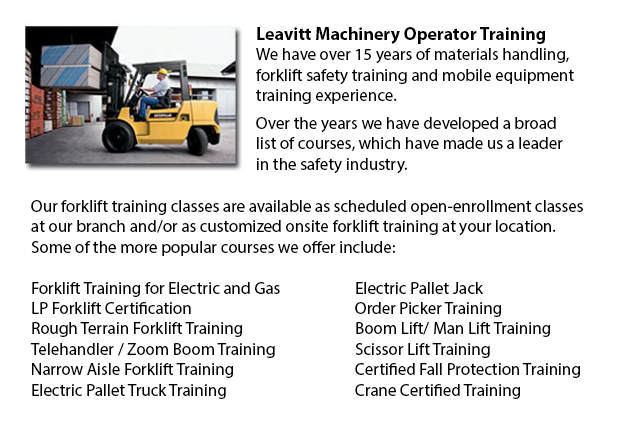
Aerial Lift Training St Catharines - Aerial lifts are able to accommodate numerous duties involving high and tough reaching places. Normally used to execute regular preservation in buildings with tall ceilings, trim tree branches, elevate heavy shelving units or patch up phone cables. A ladder could also be utilized for many of the aforementioned projects, although aerial hoists provide more safety and stability when properly used.
There are many designs of aerial hoists available on the market depending on what the task required involves. Painters sometimes use scissor aerial lifts for instance, which are classified as mobile scaffolding, of use in painting trim and reaching the 2nd story and higher on buildings. The scissor aerial platform lifts use criss-cross braces to stretch and enlarge upwards. There is a platform attached to the top of the braces that rises simultaneously as the criss-cross braces raise.
Bucket trucks and cherry pickers are another variety of aerial hoist. They contain a bucket platform on top of a long arm. As this arm unfolds, the attached platform rises. Forklifts utilize a pronged arm that rises upwards as the lever is moved. Boom lift trucks have a hydraulic arm that extends outward and elevates the platform. Every one of these aerial lift trucks require special training to operate.
Through the Occupational Safety & Health Association, also called OSHA, training courses are on hand to help ensure the employees satisfy occupational values for safety, system operation, inspection and repair and machine weight capacities. Employees receive qualifications upon completion of the course and only OSHA licensed workers should run aerial lifts. The Occupational Safety & Health Organization has formed rules to maintain safety and prevent injury when utilizing aerial lifts. Common sense rules such as not using this apparatus to give rides and making sure all tires on aerial platform lifts are braced in order to hinder machine tipping are referred to within the rules.
Sadly, data show that in excess of 20 operators die each year when working with aerial platform lifts and 8% of those are commercial painters. Most of these incidents are due to inappropriate tire bracing and the hoist falling over; therefore some of these deaths had been preventable. Operators should ensure that all wheels are locked and braces as a critical safety precaution to prevent the machine from toppling over.
Marking the surrounding area with observable markers need to be utilized to safeguard would-be passers-by so that they do not come near the lift. Furthermore, markings should be set at about 10 feet of clearance amid any electrical lines and the aerial lift. Lift operators should at all times be properly harnessed to the hoist when up in the air.
-
Rough Terrain Forklifts
Rough Terrain Forklifts Training St Catharines - There are actually two classifications of lift trucks within the production industry, the rough terrain model and the industrial model. Rough terrain forklifts appeared in the 1940's built predominantl... More -
JLG Telehandler
JLG Telehandler Training St Catharines - In the late 1960's John L. Grove, with his wife Cora embarked on on a cross country trip in their RV. Newly retired, after spending several years working with his brother to assemble their crane company into a... More -
Scissor Pallet Trucks
Scissor Pallet Truck Training St Catharines - Scissor lift pallet trucks are created to have the ability to move and stack pallets with a built-in lifting device that permits the pallets to be elevated. This equipment is very functional for working... More -
Pallet Lifts
Pallet Lifts Training St Catharines - A pallet jack is a piece of equipment dedicated in the moving of pallets of many dimensions and weights. They can be used as an appendage for platform lifts, cranes and other types of heavy machinery or be utiliz... More -
Scissor Lifts
Scissor Lift Training St Catharines - The scissor lift or table lift, is a mechanical industrial lift that has been tailored to be utilized in retail, wholesale, manufacturing and production settings. Mechanized scissor lifts have been used chiefly w... More

Forklift Certification St Catharines
TOLL FREE: 1-888-254-6157
St Catharines, Ontario
forkliftcertificationstcatharines.com/
Email Us
About Us


